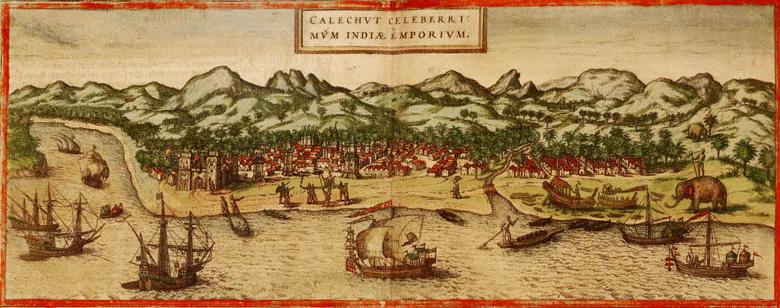- Add to Favorites
-
Your web browser does not support
Add to Favorites.
Please add the site using your bookmark menu.
The function is available only on Internet Explorer

11Story
|
History of the "Spice Islands" |
|
The native Bandanese people traded spices with other Asian nations, such as China, since at least the time of the Roman Empire. With the rise of Islam, the trade became dominated by Muslim traders. One ancient Arabic source appears to know the location of the islands, describing them as fifteen days sail East from the "island of Jaba" - presumably Java - but direct evidence of Islam in the archipelago occurs only in the late 1300s, as China's interest in regional maritime dominance waned. With Arabic traders came not just Islam, but a new technique of social organization, the sultanate, which replaced local councils of rich men (orang kaya) on the more important islands, and proved more effective in dealing with outsiders.
By trading with Muslim merchants, Venice came to monopolise the spice trade in Europe between 1200 and 1500, through its dominance over Mediterranean seaways to ports such as Alexandria, after traditional overland connections were disrupted by Mongols and Turks. The financial incentive to discover an alternative to Venice's monopoly control of this lucrative business was perhaps the single most important factor precipitating Europe's Age of Exploration. Portugal took an early lead charting the route around the southern tip of Africa, securing various bases en route, even accidentally discovering the coast of Brazil in the search for favourable Southerly currents. Portugal's eventual success and the establishment of its own absolutist monopoly provoked the other maritime powers in Europe-Spain, France, England and the Netherlands - to challenge and overcome the Portuguese position. |
 |
Image of Calicut, India from Georg Braun and Frans Hogenberg's atlas Civitates orbis terrarum, 1572. |
|
Because of the high value that the spices had in Europe and the large incomes that it produced, the Dutch and British were soon involved in conflicts to try to gain a monopoly over the region. The fighting for control over these small islands became very intense with the Dutch even giving the island of Manhattan to the British in exchange for, among other things, a small island that gave the Dutch full control over the Banda archipelago. The Bandanese people lost the most in the fighting with most of the people being either slaughtered or enslaved by the Dutch. Over 6,000 were killed during the Spice Wars.
The goal of reaching the Spice Islands, eventually to be enveloped by the Dutch East Indies empire, led to the accidental discovery of the West Indies, and lit the fuse of centuries of rivalry between European maritime powers for control of lucrative global markets and resources. The tattered mystique of the Spice Islands finally died when France and Britain successfully smuggled seeds and plants to their own dominions on Mauritius, Grenada and elsewhere, making spices a more commonplace and affordable commodity.
< Read more about the History of the "Spice Islands" > * Early history
Source: Wikipedia |
| << PREVIOUS SECTION << |